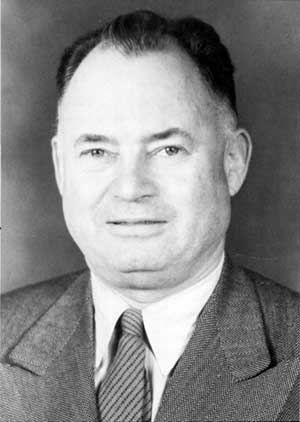|
National Park Service: The First 75 Years
Biographical Vignettes |

|
Thomas Vint
1894-1967
by Mary Shivers Culpin

For nearly 40 years, Thomas Vint played a major role in the physical development of the national parks and monuments. His influence began during the infancy of a defined park architecture program through the beginning of the Mission 66 period. The 1920 University of California graduate studied for a time at the Ecole de Architecture, University of Lyon, France. His National Park Service career began in 1923 as a draftsman working under the well-known rustic architects Gilbert Stanley Underwood and Herbert Maier in Yosemite National Park. In 1927 he assumed the chief landscape architect's position and remained in command of landscape architecture and architecture for the National Park Service until his retirement in the 1960s.
Vint began his National Park Service career at a very challenging time. The late 1920s and early 1930s were times of extensive construction of roads, housing, visitor lodging, and campgrounds. Assembling a staff of fine, creative landscape architects and architects, Vint instilled the philosophy of harmonizing the buildings or structures with the environment. Vint co-authored an agreement with the Bureau of Public Roads in which the bureau supplied the technical documents and the construction of major road projects, and the National Park Service provided the landscaping design and details. He also developed the idea of Master Plans for parks, which provided comprehensive planning for all important phases of planning, design, and construction. Vint took a major role in the organization of the Historic American Building Survey sponsored by the National Park Service, the Library of Congress, and the American Institute of Architects to preserve a record of buildings important in American history. Toward the end of his career, he demonstrated far-sighted leadership as chairman of the Steering Committee in developing Mission 66. At many parks or monuments today, Thomas Vint's influence can still be seen in the fine rustic buildings or bridges or, more subtly, in the manner in which the developed areas blend with the environment.
From National Park Service: The First 75 Years
Top
Last Modified: March 27 2017 03:00:00 pm EDT
https://www.nps.gov/parkhistory/online_books/sontag/vint.htm
![]()